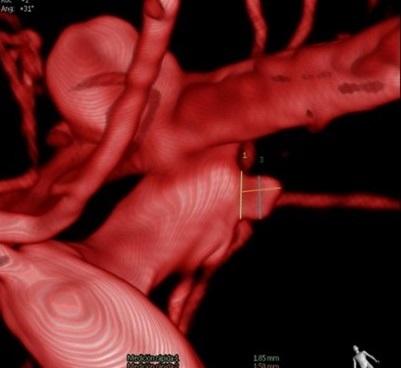Usted está aquí
Peruvian Journal of Neurosurgery
Complex multiple ruptured aneurysms treated with embolization in a single session: case report.
ABSTRACT
Introduction: Multiple aneurysms are responsible for 15 to 35% of spontaneous subarachnoid hemorrhages, some of them being complex aneurysms. These are characterized by their large size, difficult location, wide neck, weak wall structure, giving rise to branches from the aneurysm, presenting calcifications, or due to ineffective previous treatment. Its management is difficult due to the variation in the anatomical distribution and the difficulty of determining which aneurysm is the ruptured one. The complex aneurysm needs special techniques for its management. Embolization has an acceptable complication rate compared to clipping, with the additional benefit of being a minimally invasive technique with a short hospital stay.
Clinical case: A 50-year-old female patient who presented headache, nausea, vomiting, and sensory disorder, being diagnosed with subarachnoid hemorrhage due to a ruptured aneurysm of the bifurcation of the right internal carotid artery. In addition, 3 other aneurysms were found (left carotid bifurcation, top of the basilar, and communicating segment of the left carotid). We proceeded to embolize the two aneurysms of the carotid bifurcation with coils using the remodeling technique, as well as the one at the top of the basilar with coils assisted with a double “Y” stent. The clinical evolution was good, and the patient was discharged without neurological sequelae.
Conclusion: The embolization of multiple aneurysms in a single session is an effective and safe technique. If the aneurysms are complex, the use of "remodeling" techniques or stent assistance is required to achieve a successful outcome.
Keywords: Aneurysm, Ruptured, Subarachnoid Hemorrhage, Embolization, Therapeutic, Stents. (Source: MeSH NLM)



